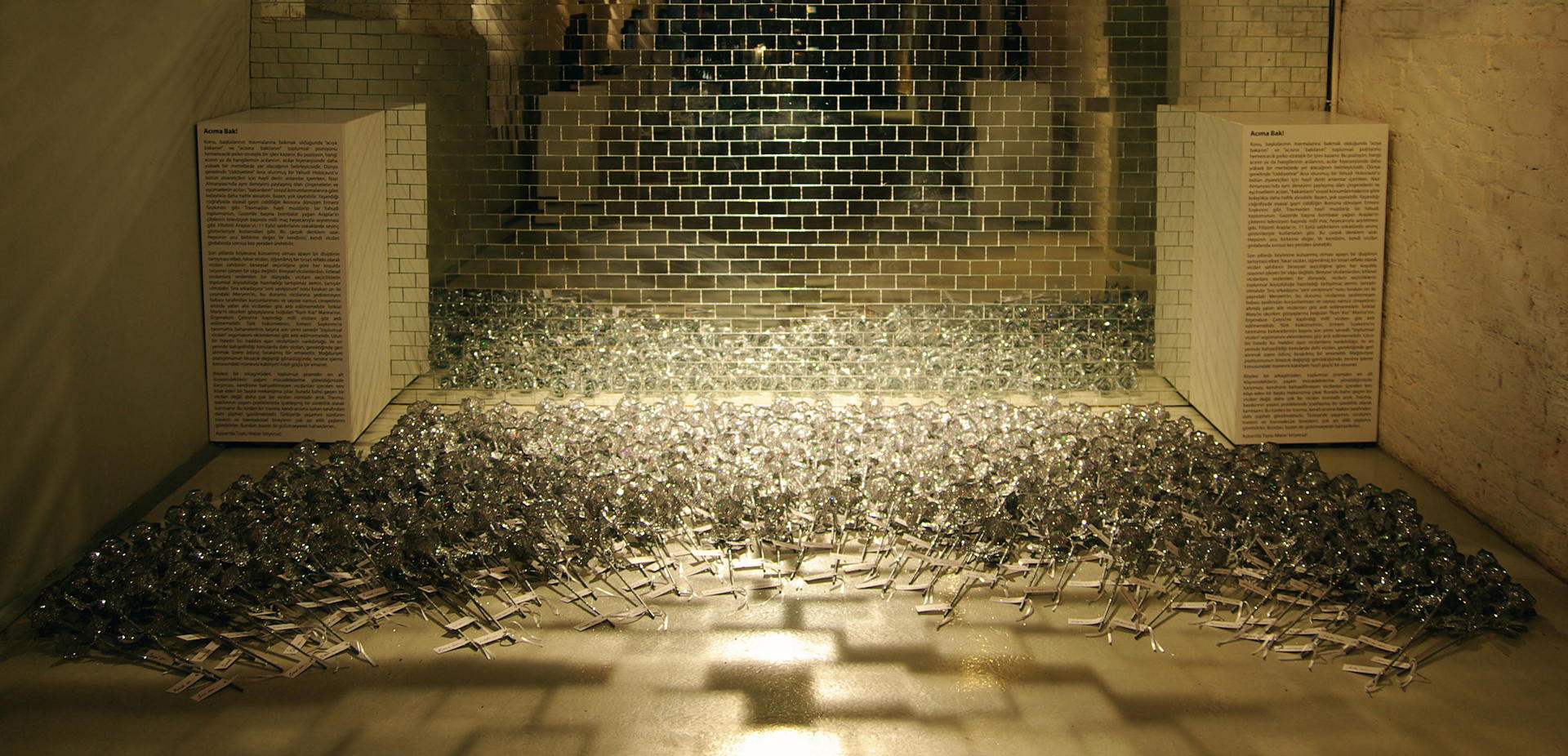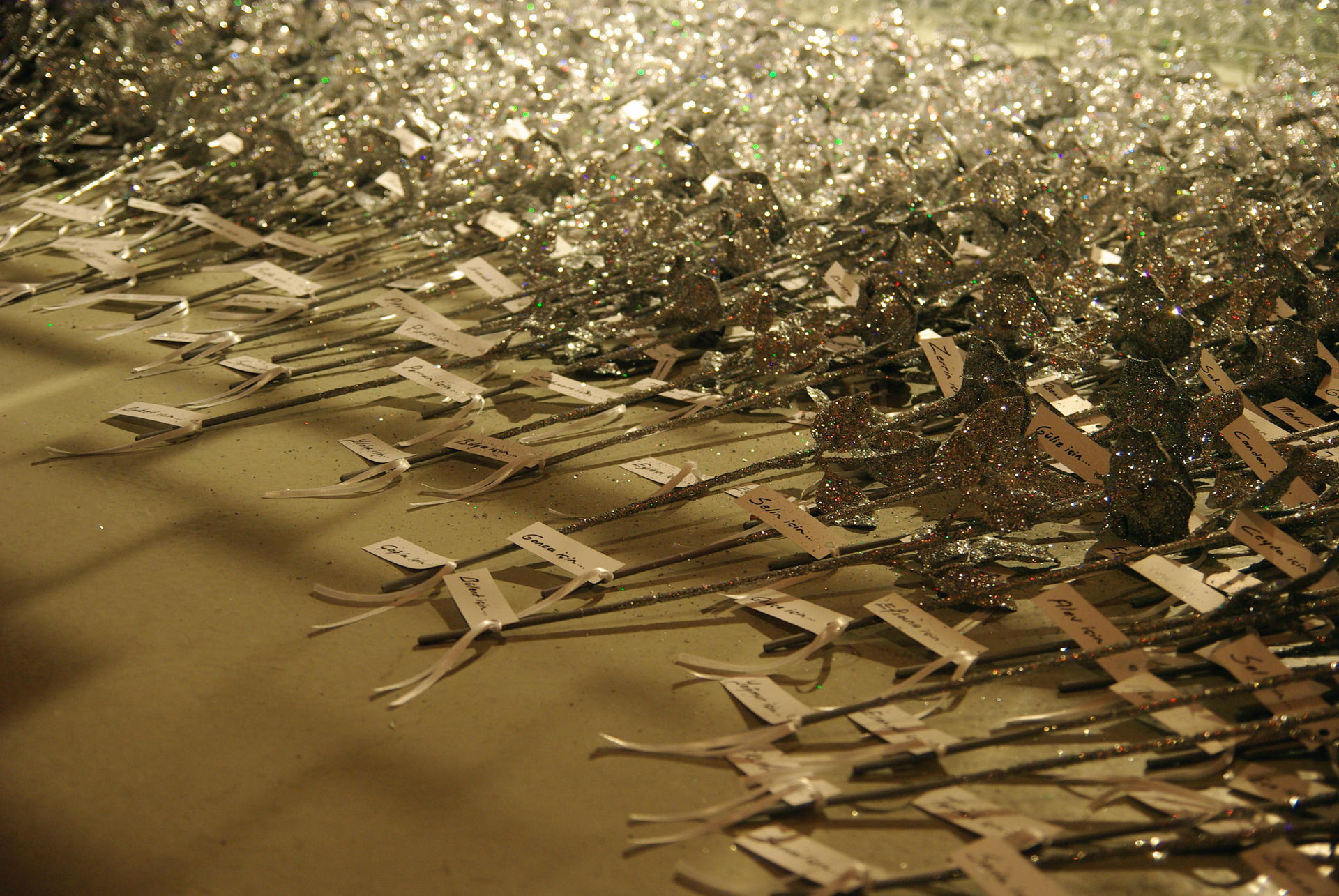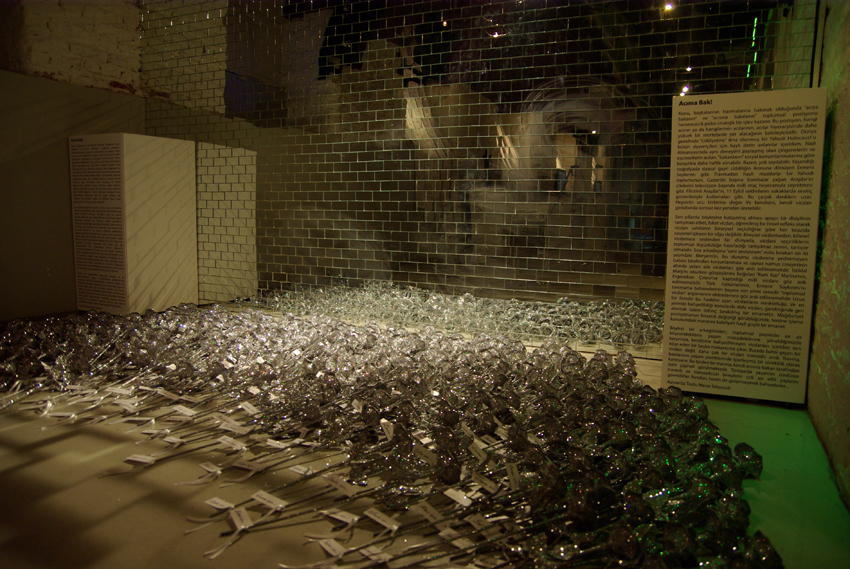“Mass Grave”
Look at my pain: 365 roses coated with imitation silver / İstanbul, 2010
When it is about looking at other people’s traumas, the social position of the “one looking at the pain” and the “one whose pain is looked at” quickly gains psycho-strategic function. This position is the definer of whose pain will be ranked higher in the hierarchy of pains. While the Jewish Holocaust, considered “serious” all over the world has profound meaning for its visitors, the suffering of the Gypsies and the homosexuals who shared the same experience in Nazi Germany could be taken more lightly depending on the social position of the ‘cabinet ministers’. And sometimes could even be considered to have never taken place. Just like the Armenian Genocide which has become the icon of political irresponsibility in the geography where it happened. Like the Jewish community, suffering from trauma, watching the ordeal of the Arabs in Ghazzah being bombed with the excitement of watching a national match on television. This crooked equation goes on and on. All their tips touch each other. And it could regenerate itself forever in the maelstrom of its own conscience.
Of course it’s the discussion for a whole different discipline for it to have been blessed so in recent years but conscience is not a thing that functions rationally in every situation given by the personal choice of its owner as a learned spiritual reflex. In a world where personal conscience calls out to collective conscience, the indiscussable basis prepared for social hypocrisy by conscious choices should be discussable. Twelve year old Meryem’s being shot by her father for passing her friend an ‘I love you’ note because the father’s conscience could not take it, and the family consciences beneath the innumerable honor killings shouldn’t be ignored. The ingratitude of these consciences that cross the line is a long list. Even in the most granted matters conscience is something that is lent out, to be taken back whenever necessary which also could rapidly change direction in face of change in the position of the victimization.
When we move from such post-diction towards the collective memories of those at the bottom of the conscientious pyramid we come across a mechanism that turns inside out the consciences that haven’t been granted to it. What we’re talking about here is more of an irony of conscience than a conscience. The trauma becomes an internal constant in some people’s lives. A trauma of this kind could be even looked at with doubt by someone looking at their own pain. Those not convinced by such a doubt have already left. Those who remained tried to look convinced and passed through reality.





